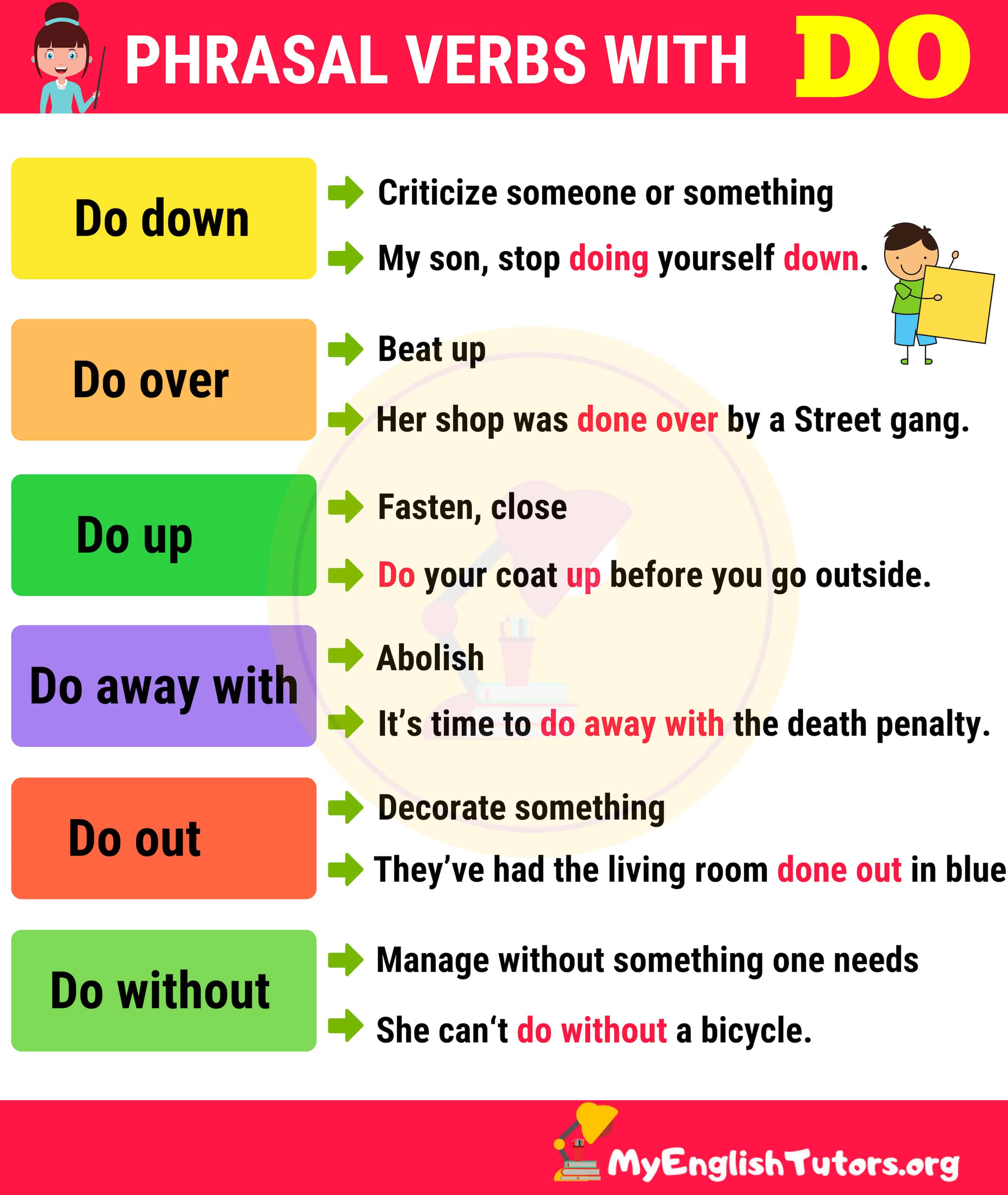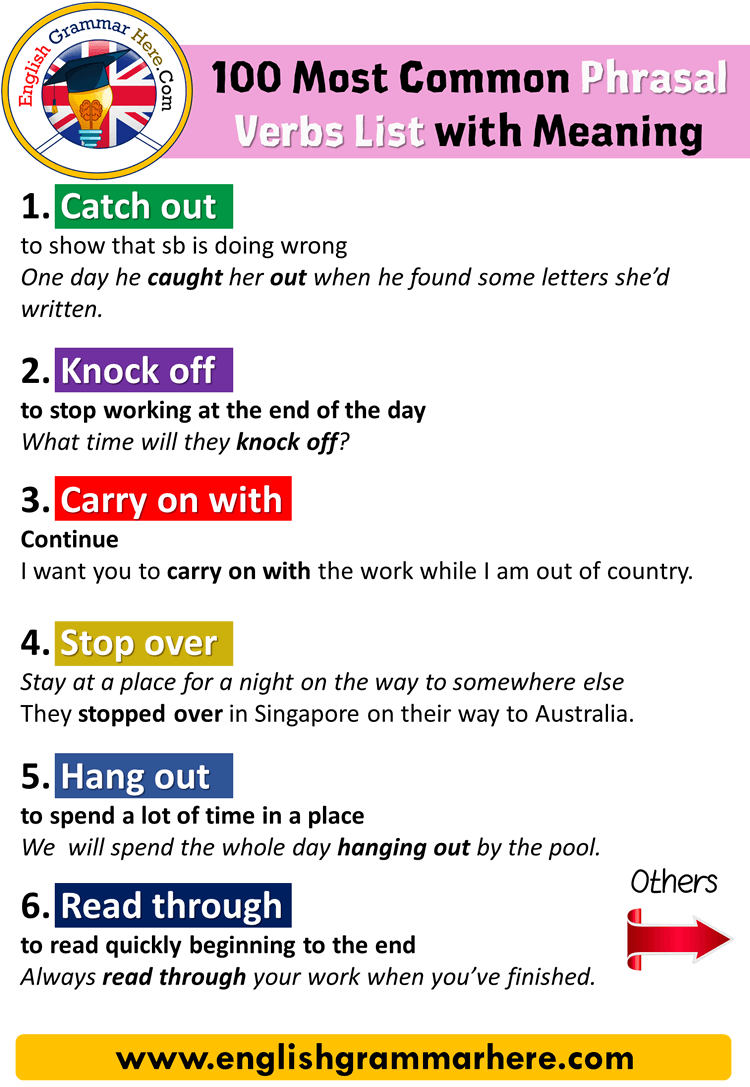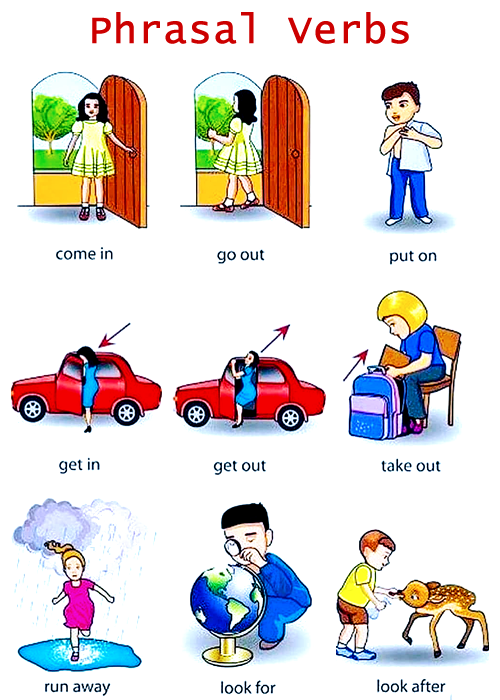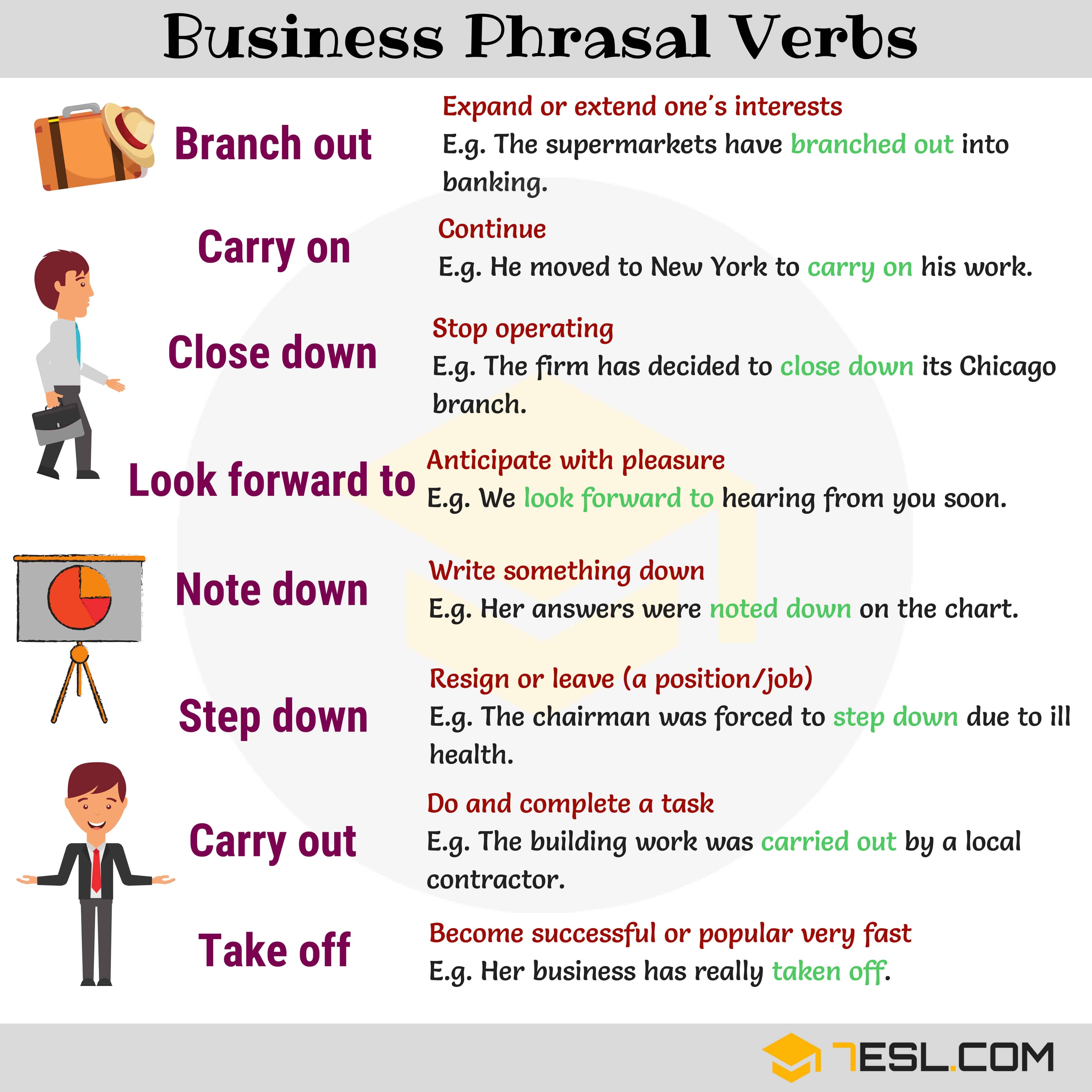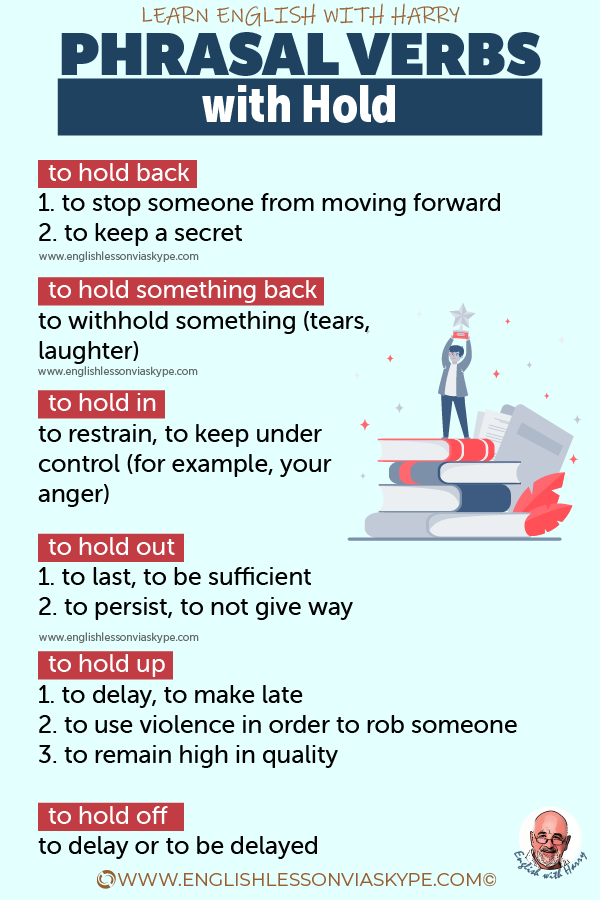At novice or intermediate levels, it is not easy for EFL learners to completely assimilate and acquire certain intricacies of grammar. Sometimes, L2 students cannot distinguish a clear cut correlation between in-class presentation and practice with out-of-class use and production in real-life contexts. As a result, language instructors should always provide learners with meaningful input to help them successfully assimilate troublesome grammar content such as the form, meaning, and use of phrasal verbs. The following sample lesson complements the seventh lesson of the course units.
One of the main objectives of this material is to present and teach some phrasal verbs in context by using samples of authentic language. The authentic materials consisted of magazine advertisements and newspaper headlines. Sample activities 1 and 2 attempt to help learners get acquainted with the meaning of phrasal verbs in their context.
Sample activity 3 is based on authentic language as learners read a series of magazine covers and underline all the phrasal verbs; then, they come up with a short definition for each verb. The following activity takes place at the computer lab as students look for sample covers that contain at least one phrasal verb. Also, they must define each verb and write an original sentence using the same phrasal verb in context. At the lab, learners use the multimedia projector or smart board to present their sentences. To establish cooperative learning, group work is also part of the teaching/learning process.
To achieve this, students get in small groups and create their own magazine covers in which phrasal verbs are incorporated to complete sample activity 5. Once again, they do this at the computer lab to facilitate the designing process. Also, students may choose a topic they find interesting or appealing such as sports, nutrition, computer equipment, home improvement, video games, health, gardening, and the like. The second part of the lesson is also conducted at the computer lab. Students are given a set of authentic newspaper headlines so that they define the phrasal verbs in boldface.
In relation to sample activity 7, students surf the Net and look for newspaper headlines that include at least one phrasal verb; they need to define the verb as well. Then, they are asked to read the content of the article to present its main ideas orally in front of the class. Because this is time consuming, this part of the lesson may be divided into two sessions. Finally, sample activity 8 is a follow-up speaking task in which learners work in pairs and take turns to ask a series of questions.
In this case, they must use the given phrasal verbs in their answers orally. This occurred although absenteeism was an important drawback in this kind of English course. By using authentic and appealing materials to present phrasal verbs in context, learners will certainly benefit from a motivating and meaningful content and engage more actively in class.
The teaching and learning of phrasal verbs is quite challenging among novice and low-intermediate EFL populations. For this reason, the main objective of this study is to specifically observe a group of EFL learners' acquisition of a series of forty phrasal verbs as a result of explicit instruction. The selection of phrasal verbs attempts to complement those presented in the course textbook and the grammar booklet. This study also presents a sample lesson to teach such content in a first-year English course. This lesson was implemented with a group of students who enrolled the course LM-1001 Integrated English I at the University of Costa Rica. In relation to the components of this quiz, students carried out four different types of exercises.
First, they were asked to rewrite the content of sentences in a way that the underlined part includes the correct phrasal verb taken from a word bank. Secondly, they read a set of five questions; then, they had to circle the answer that correctly matches the meaning of the phrasal verb in each sentence. In the case of the third exercise, they had to complete a set of sentences with the phrasal verbs from a word bank. Finally, the fourth exercise included five phrasal verbs so that students create their own original and contextualized sentences to show they knew their meaning.
Table 9 shows the final results obtained by the 18 students. Verb + preposition When the element is a preposition, it is the head of a full prepositional phrase and the phrasal verb is thus prepositional. These phrasal verbs can also be thought of as transitive and non-separable; the complement follows the phrasal verb.a.
– after is a preposition that introduces the prepositional phrase after the kids.b. – on is a preposition that introduces the prepositional phrase on nobody.c. – into is a preposition that introduces the prepositional phrase into an old friend.d. – after is a preposition that introduces the prepositional phrase after her mother.e. – for is a preposition that introduces the prepositional phrase for a linguist.f. These verbs can be transitive or intransitive.
If they are transitive, they are separable.a. – up is a particle, not a preposition.b. – over is a particle, not a preposition.c.
What Is The Phrasal Verb Of Carry On – down is a particle, not a preposition.d. – in is a particle, not a preposition.e. – out is a particle, not a preposition.f. – in is a particle, not a preposition.Verb + particle + preposition (particle-prepositional verbs)Many phrasal verbs combine a particle and a preposition. Just as for prepositional verbs, particle-prepositional verbs are not separable.a. – up is a particle and with is a preposition.b.
– forward is a particle and to is a preposition.c. The other tanks were bearing down on my Panther. – down is a particle and on is a preposition.d. They were really teeing off on me. – off is a particle and on is a preposition.e.
– up is a particle and on is a prepositionf. Susan has been sitting in for me. – in is a particle and for is a preposition. After a few class sessions, students worked with class material and sample lessons on phrasal verbs, their meaning, form, and use. Later, they were given a second instrument that assessed the same phrasal verbs in a way that learners would not notice that those verbs were informally evaluated beforehand.
It is important to say that students get familiar with several verbs besides the ones spotted in these instruments. So, the instructor did not focus exclusively on the target ones during the class sessions. The results are summarized in the next chart.
From the perspective of verbs, Table 5 indicates that 18 verbs were used correctly by most students on the scale of the passing grade. As verbs consisting of two or three separate parts, often with idiomatic meanings, phrasal verbs can be challenging for non-native speakers. And yet in everyday speech, one should be able to use phrasal verbs such as pick up, look down, put out or hold off. But how common are they in academic writing, and how are they used? For that reason I prefer to treat phrasal verbs as 'opportunity' teaching. This means finding (or 'coming across', if you prefer) phrasal verbs in context and drawing students' attention to them, or introducing them at opportune moments.
A complex aspect of phrasal verbs concerns the distinction between prepositional verbs and particle verbs that are transitive . Particle verbs that are transitive allow some variability in word order, depending on the relative weight of the constituents involved. Shifting often occurs when the object is very light, e.g.
Surf the Net and look for three magazine covers that contain phrasal verbs. Look for magazines with appealing topics for you . Keep in mind that some verbs may be separable or non-separable. Get ready to present this with the multimedia projector. This article is aimed at observing the acquisition and assessment of a list of forty phrasal verbs in a group of first-year students of the course LM-1001 Integrated English I at the University of Costa Rica.
First of all, the author implements a placement test to determine the students' proficiency level, being Integrated English I the first EFL course of the program. Then, the author administers two instruments to assess the students' knowledge on a series of phrasal verbs before the presentation, practice, and production throughout the second part of the semester. A contextualized sample lesson to practice a selection of phrasal verbs is also included. To finish, the students receive two additional instruments and a final evaluative instrument to observe the level of acquisition of twenty phrasal verbs as a result of explicit instruction.
To establish learner autonomy regarding the study of phrasal verbs, students may use flashcards as a learning strategy. These "cards are a reliable source for self-study and the students know precisely why each card is in the box and are able to evaluate which word to focus on" (Coxhead, 2006, p.42). By doing so, learners may easily consult the meaning, form, and use of phrasal verbs.
Thus, prepositional phrasal verbs give an additional level of difficulty to most students. On the other hand, from the point of view of these 18 students, the average of accuracy level is 6.0. Table 4 compiles the students' previous knowledge on a series of 20 non-separable phrasal verbs. For each correct use of a given verb in a sentence or definition, the author used check marks (() and an "X" is used for mistakes. But then I think about the teacher's role as a guide to the learner in showing the way to the really useful language that will help them become an effective and sophisticated user of English. This is perhaps especially relevant in the arcane field of phrasal verbs where learners are often found to be out of their comfort zones.
For this reason I set myself the challenge of identifying the 15 essential phrasal verbs at upper intermediate level – assuming that basics such as 'get up' and 'put on' are already in place. The terminology of phrasal verbs is inconsistent. Modern theories of syntax tend to use the term phrasal verb to denote particle verbs only; they do not view prepositional verbs as phrasal verbs. In contrast, literature in English as a second or foreign language ESL/EFL, tends to employ the term phrasal verb to encompass both prepositional and particle verbs. A phrasal verb is usually a verb plus a preposition that we use in a different context than the verb's original meaning.
For example, did you know that to carry a tune means to sing well? To carry literally means to move something while supporting it, but it can mean different things when used in phrasal verbs. In this lesson, you will learn what it means to carry out your tasks, carry on in class or at work, get carried away, and more. Despite this, phrasal verbs shouldn't be completely avoided in academic papers. Most phrasal verbs are neutral rather than informal, and it's sometimes more appropriate to use a phrasal verb than a single verb. For example, carry out a study is much more frequently used than do a study or perform a study.
Phrasal verbs have always been common, but have increased in number since the mid-19c and even more so since the mid-20c, especially in AmE. As a result, a number of dictionaries of phrasal verbs have been published since 1974 and increasingly dictionaries for both native and foreign users have given phrasal verbs main-entry or high secondary status. See PREPOSITIONAL VERB, SLANG, WORD-FORMATION. As a student of English, some of the things you need to learn are phrasal verbs. And when you learn them, it's very helpful to know if they are transitive or intransitive.
In this lesson, you will learn a list of common phrasal verbs with CARRY in English with meaning and examples with ESL infographic. Below is the list of 10+ phrasal verbs with carry with meaning and example sentences. Because phrasal verbs aren't so common in academic writing, you should think carefully before using them - but not discard them completely.
Pay close attention to when and how they're used in the papers you read. The two categories have different values. Particle-verb compounds in English are of ancient development, and are common to all Germanic languages, as well as to Indo-European languages in general. Those such as onset tend to retain older uses of the particles; in Old English on/an had a wider domain, which included areas now covered by at and in in English. Some such compound nouns have a corresponding phrasal verb but some do not, partly because of historical developments. The modern English verb+particle complex set on exists, but it means "start to attack" .
Verb-particle compounds are a more modern development in English, and focus more on the action expressed by the compound. That is to say, they are more overtly verbal. Phrasal verb.1 She looked his address up. Phrasal verb.2 When he heard the crash, he looked up. Not a phrasal verb.2 When he heard the crash, he looked up at the sky.
Not a phrasal verb.The terminology used to denote the particle is also inconsistent. Sometimes it is called an adverb and at other times an intransitive prepositional phrase. The inconsistent use of terminology in these areas is a source of confusion over what qualifies as a phrasal verb and the status of the particle or a preposition.
Administer the learners' acquisition of phrasal verbs with two alternative instruments and a final evaluative instrument, being this a grammar quiz. The question is which phrasal verbs should you avoid, and which should you use? The following is a list of the top 10 phrasal verbs used in academic writing, extracted from our corpus analysis. You may have seen these in papers already, and considered them in your own writing. So, what I notice with a lot of my students, they're Spanish speakers, Portuguese speakers, any latin-based language, they like to use a lot of cognates. So, today I'm going to talk to you about a subject that a lot of English learners hate to talk about, and that's phrasal verbs.
So watch this video, read the transcript, and learn 10practical phrasal verbs, which you can start using right now! After watching, please comment down below with some example sentences or just to let us know what you thought. When a particle verb is transitive, it can look just like a prepositional verb. This similarity is source of confusion, since it obscures the difference between prepositional and particle verbs. A simple diagnostic distinguishes between the , however.








